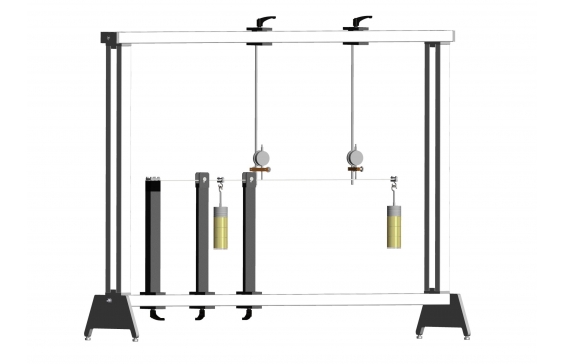SE 110.14 Elastic line of a beam

Beams are important design elements in mechanical engineering and building construction that can deform under load. Beams are subjected to load transversely in the axial direction, which leads to deflection. In linear–elastic material behaviour, the bending line, also known as elastic line, is used to determine the deflection of beams. Deflection can be determined at any point on the beam using the influence coefficients and Maxwell–Betti’s commutative theory.
The SE 110.14 unit is used to determine the deformation of a bending beam. To do this, a beam is studied under varying loads, different support conditions and static overdetermination. The elastic line is determined by calculation and verified by experiment.
The experimental setup includes three beams made of different materials. Two pinned supports and one fixed support with clamp are available. The dial gauges record the resulting deformation of the beam. The parts of the experiment are clearly laid out and securely housed in a storage system.
The entire experimental setup is constructed in the SE 112 mounting frame.
- beams of different materials: steel, brass and aluminium
Beams
- steel, LxWxH: 1000x20x3mm
- brass, LxWxH: 1000x20x6mm
- aluminium, LxWxH: 1000x20x6mm
Weights
- 2x 1N (hanger)
- 10x 1N
- 6x 5N
Measuring ranges
- travel: 0…20mm
- graduation: 0,01mm
- determine the elastic line
- beams of different materials: steel, brass and aluminium
- 2 pinned supports
- 1 fixed support with clamp
- dial gauges for recording the deformation of the beam
- storage system for parts
- experiment setup in the SE 112 mounting frame
- elastic line under varying load
- elastic line under various support conditions
- demonstration of Maxwell–Betti’s theorem
- elastic line and support forces in statically indeterminate systems
